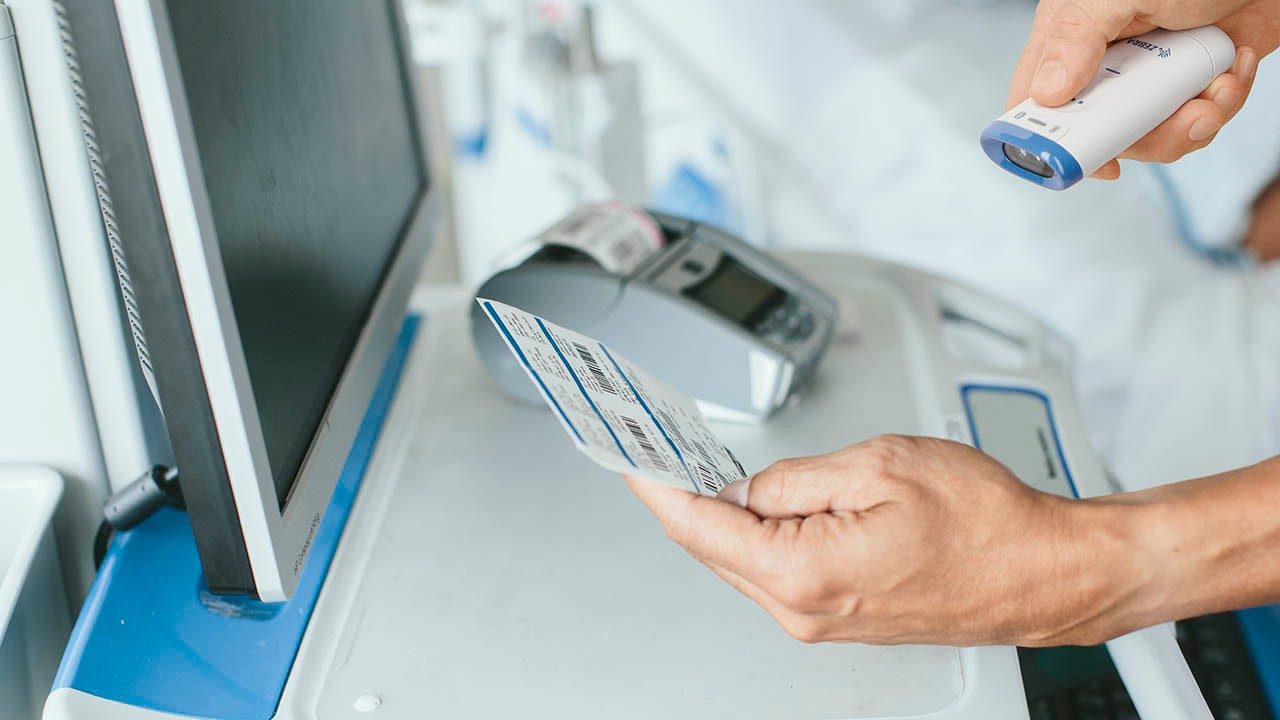by Ken Bhella

Some say the barcode has become the heart of clinical workflows, and that’s hard to argue against. Barcode scans have become the best practice for positive patient identification (PPID), accurate medication administration and more in hospitals, ambulatory surgical centers, diagnostics centers, and pharmacies. They have also become the primary means for updating electronic medical records (EMR), healthcare information systems, and even healthcare schedules.
Mistakes and missing data both degrade the quality of care a patient receives and disrupt continuity of care, yet they’re common with manual data inputs. It’s also easy to misread information on a patient’s wristband, medication bottle, IV bag, or EMR. Though clinicians are superheroes, they’re also human like the rest of us. Their eyes can deceive them, especially when they’re in a hurry or wrapping up a long shift. What might look like 80 mg might actually be 30 mg, and there are many drug names that are similar in spelling. Likewise, it’s hard to uphold the “five rights” of medication administration – right patient, medication, time, dose, and route – or maintain patient privacy if it’s not easy to verify the details of the doctor’s order against the medication or patient in front of you.
So, clinicians have increasingly come to rely on barcode scans to verify they’re taking the right actions for the right patients at the right time – and reporting the right data into each patient’s EMR. However, doctors and nurses aren’t the only ones who depend on barcode-based data to do their jobs efficiently and effectively.
Nearly every member of the healthcare community will either need to scan a barcoded item or retrieve a record created from a barcode scan at some point in their day. For example, supply managers will use barcode scans to count stock and monitor inventory utilization rates. Lab technicians will scan the barcoded label on inbound and processed specimens to ensure the right test data is being correlated and reported against the right patient record. And the billing department will use data collected via barcode scans of patients’ wristbands, medication labels, medical device packaging, and more to process insurance claims.
I could go on and on about the role barcodes play in healthcare today – how even radiologists, pharmacists, and porters use barcode scans for PPID, reporting, and tracking purposes – but you know how important they are. So, let’s talk for a moment about why barcode scanning solutions are not as pervasive as they should be in hospitals, clinics, and other facilities.
Making barcode scans a requirement before key actions are taken could certainly help to reduce the number of medication administration and lab reporting errors still occurring each year. It could also help speed up clinical workflows without compromising patient safety or privacy. In fact, it would help preserve both. So, why is anyone still manually or verbally verifying patient identification, medication orders, or lab orders? Why isn’t this simple, trustworthy verification solution the standard for PPID, specimen collection, medication administration, EHR management and more in every acute and non-acute facility around the world?
Some might say that it’s an adoption issue; that barcode scanning technologies are deployed but aren’t being used like they should.
However, after talking to healthcare IT leaders and administrators, I realized that healthcare systems may be the ones that are hesitant to adopt more barcode-based applications because one of four things is likely happening:
It seems like the biggest barrier to barcode application adoption centers is that no one has had a solution to all these problems. That’s why I went to work with my team to solve each of them – landing at a single solution that we call the Modular Solutions Architecture.
Every time you need to push a firmware update, you probably have to take the scanner offline for a good 15+ minutes, right? In fact, you probably can’t do much to manage the device without taking it offline, as data collection (EMR) and remote management modules typically conflict with one another. And I would bet your current applications conflict with one another, meaning you can’t run a query via one without locking out the others.
Additionally, you may not be able to route barcode data to two different information systems simultaneously from a single scan. If you want a record of medication administration to go to both the EHR and a second cloud endpoint for later auditing in the context of workflow efficiency, inventory management or care management, then the clinician would have to scan every barcode in that medication administration process twice.
Well, the good news is that ALL the pain you’re feeling today can go away in an instant. (Well, by tomorrow.)
My team and I found a way to put Zebra DataCapture DNA to work for you through Zebra’s Modular Solutions Architecture. Now you can introduce or adapt scanning-based workflows anytime, without doing anything more than downloading a driver and an XML config file then loading in the module you need to support the workflow. That’s right…you can enable your scanning hardware to do more and keep up with your changing enterprise needs – without having to develop a single thing – all within Zebra’s Modular Solution Architecture!